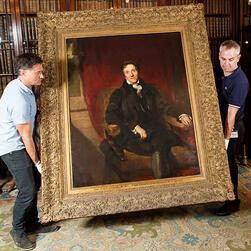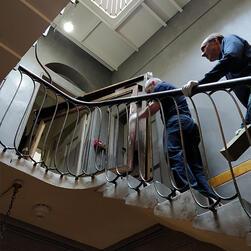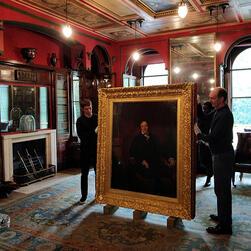Above: Conservators working on the 'Lawrence Frame'
Why is this frame important?
Every object in the museum is important, but both this painting and its frame are especially treasured objects. The frame holds Sir John Soane's portrait, which Soane comissioned towards the end of his life - he was 76 when he sat for the portrait. Painted by the eminent portraitist Sir Thomas Lawrence, who painted several royal sitters, it hangs in the Library-dining room, opposite the door, and is one of the first things people see when they enter the museum. Soane was clearly thinking about how he presented himself to posterity when he sat for this portrait by such a famous artist, and hung it in such a prime position in his Museum.
In addition to this, the frame is the painting's original frame, which is rare for many nineteenth-century paintings. The frame was made by a well-known frame-maker called George Marant, who Sir Thomas Lawrence recommended his clients as a frame maker. Marant's frames are often referred to as 'Lawrence Frames'.





